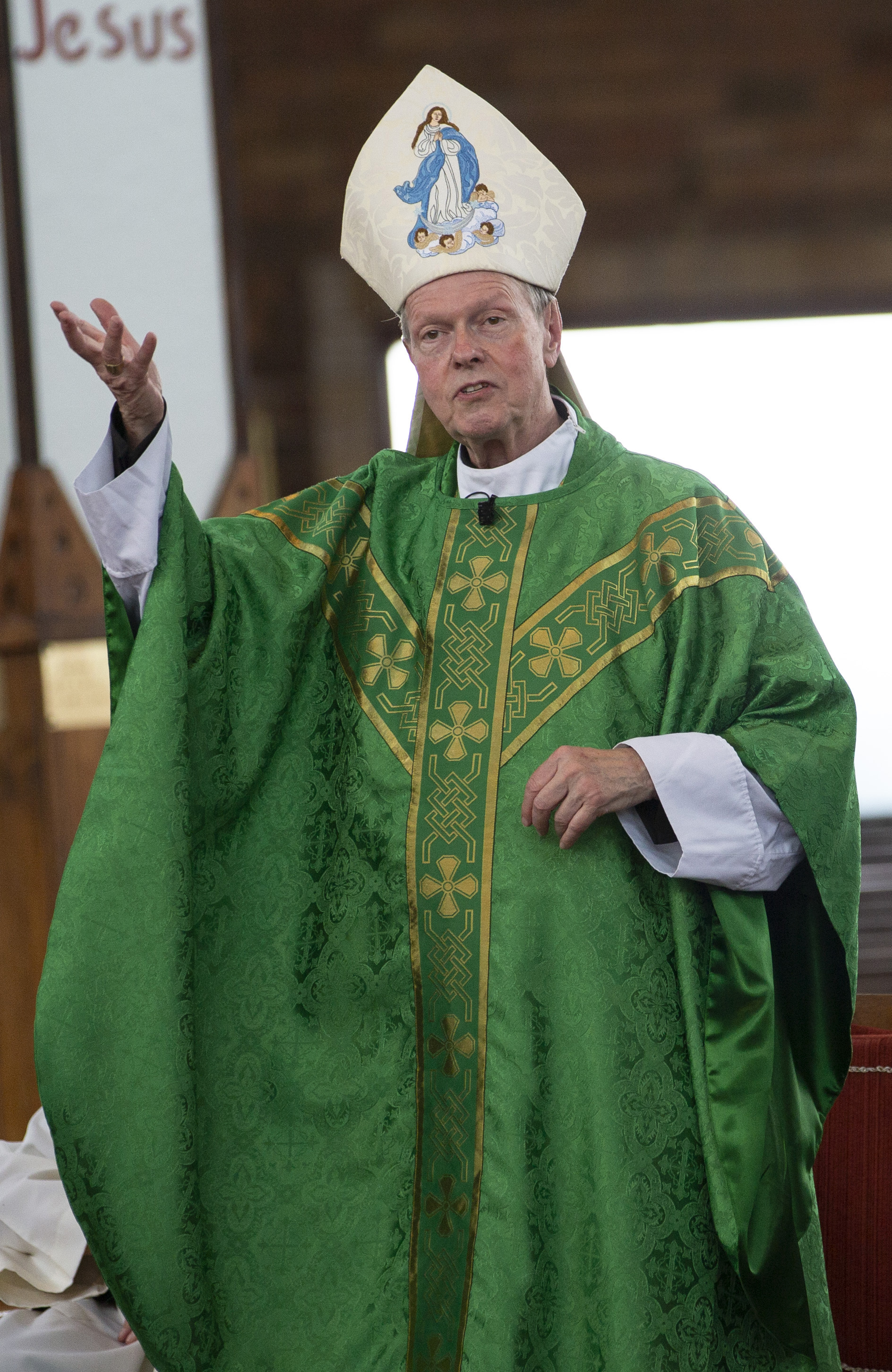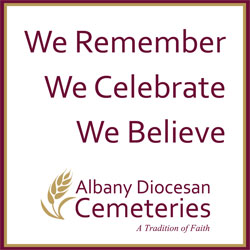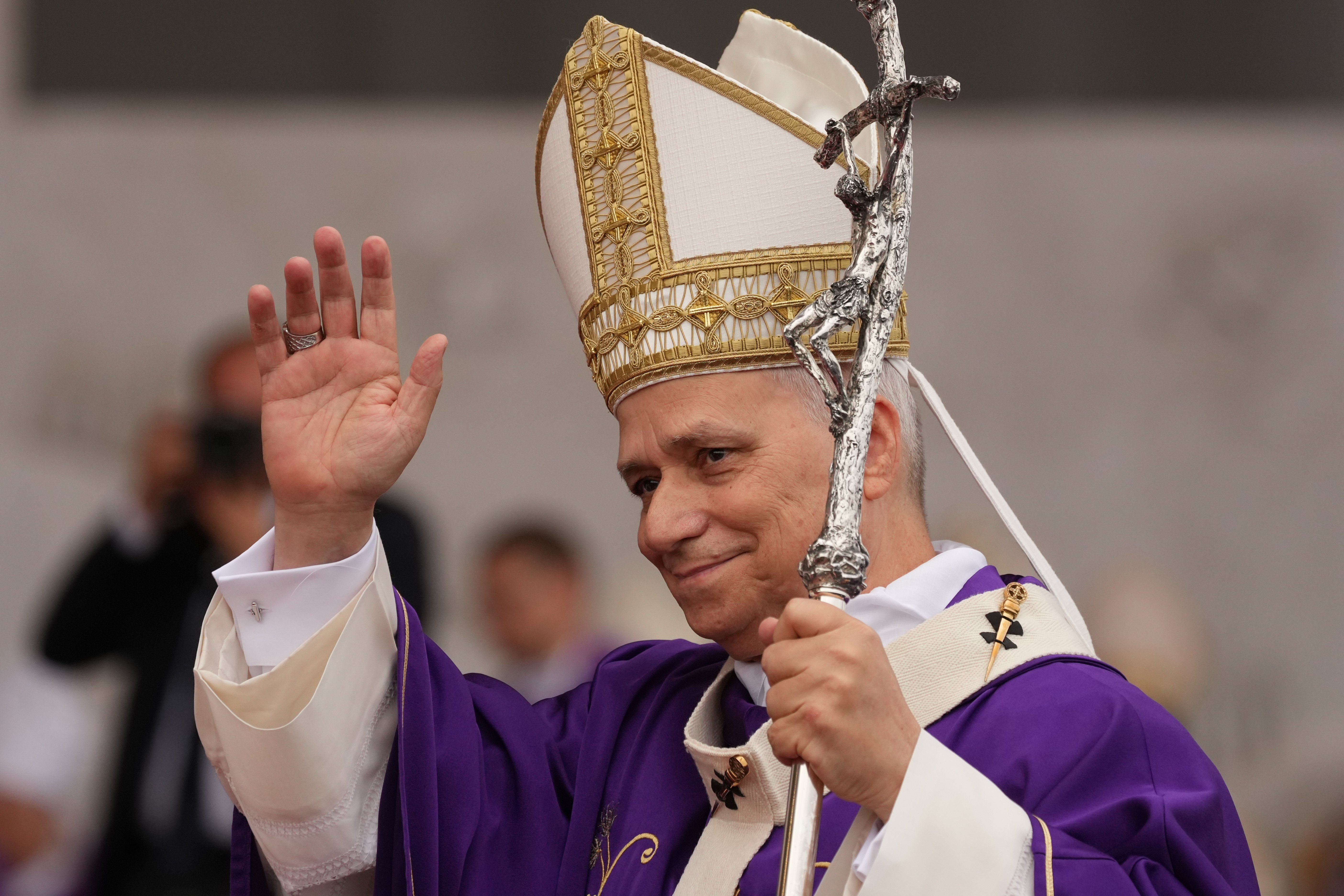September 11, 2024 at 8:50 a.m.
|
Updated May 30, 2025 at 12:01 p.m.
'LORD, WHEN DID WE SEE YOU HUNGRY'
The catechetical theme of the year, “Lord, when did we see you hungry,” is not just a challenge for us to respond to; it is a decision about what kind of Church we will be. Interestingly, in Matthew 25 the question is asked twice. Once by those on the right who fed the hungry, and a second time by those on the left who did not feed them. In both instances, Jesus directly identifies himself with the least of our brothers and sisters. Both groups seem to profess Jesus as Lord, but only one can be designated as saints to whom Jesus says, “Come, you who are blessed by my Father. Inherit the kingdom prepared for you from the foundation of the world.” While it may not be a typical catechetical theme, we must understand it. It is the path to salvation.
I have never been to a Pastoral Council meeting where anyone was against welcoming people. But here we are called to do something. To accept that our salvation is tied up in the welfare of the other, especially what the Hebrew bible termed the anawim, the little ones, the poor ones. The doors of the Church are not just to let people in, but to have our people go out and serve. The open doors of the Church are not for locking Jesus inside, but allowing him to transform the world through us.
The powerful image of Dorothy Day, Servant of God, that accompanies the theme makes clear our mission. Her inviting a holy family of shivering migrants into Maryhouse in New York City reminds us that what other people might see as expendable or inconvenient is indeed Christ himself. To the excluded, to the forgotten, to the lonely, Dorothy Day found a place. She knew what to do with hungry people. She fed them.
And she fed them Christ. Not in sermons or demands for conversion (for she knew how searingly personal that decision was), but in the humility and dignity she shared. The respect she showed. As Jesus went to the anawim of his time, as he touched lepers and restored sight to the blind, he never forgot their humanity. He asked what they needed. He allowed power to flow out of himself. With a whole world to save, he never forgot any person. A Church too big to forget the small and powerless is not the Church of Jesus Christ.
For 40 years, I have been inspired by the Catholic Worker movement. Beginning with the mentorship of Walt Chura and Simple Gifts bookstore on Madison Avenue in Albany to the incredible example of Fred Boehrer and Diana Conroy at Emmaus House, the Catholic Worker’s values of hospitality and active peacemaking is a model of Church at the most personal level with echoes reaching out to the universal.
Finally, this theme reflects the recent name change of our diocesan office to the Office of Discipleship Formation. Yes, we will be here for your questions about catechesis and sacraments, but we point to a more profound and mysterious calling. To walk in the footsteps of Jesus. To see what he saw and care how he cared. To answer the question like he did, “Amen, I say to you, whatever you did to one of the least brothers of mine, you did it for me.”
Father Robert Longobucco is Vicar General and Moderator of the Curia, Director for the Propagation of the Faith in the Diocese of Albany and pastor at St. Kateri Tekakwitha Parish in Schenectady.
- US bishops underscore virtue of hope as 2025 Jubilee Year closes in dioceses
- Tips to strengthen your domestic church in 2026
- Artist’s ‘Magnificat’ has brought joy, hope to Jubilee pilgrims in Diocese of St. Cloud
- Evangelization, prayer are big drivers of success at 25-year-old Relevant Radio
- From Nigeria to Belarus, 2025 marks a grim year for religious freedom
- Ten thousand young Christians gather in Paris for Taizé’s European New Year meeting
- Political authority should embody humility, honesty, sharing, pope says
- Ukrainian bishop issues letter to American people amid Trump-Zelenskyy talks
- As Holy Doors close, cardinals emphasize God’s arms are always open
- Families fostering Gospel values provide hope in dark world, pope says








Comments:
You must login to comment.